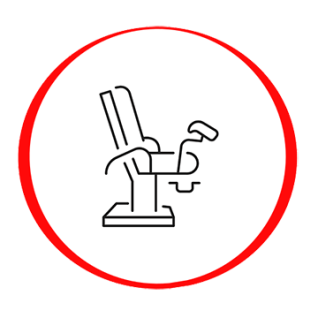Sampling 6.00€

10-Pathogen STI Swab Panel
76.00€
95.00€
The validity period of online orders: 3 months from the purchase date.
Chlamydia trachomatis is one of the most common sexually transmitted infections (STIs). Chlamydial infection is often asymptomatic, especially in its early stages. It can affect both men and women and may involve various parts of the body, including the genitals, rectum, and throat. If left untreated, even in the absence of symptoms, it may lead to serious complications such as infertility, chronic infections, and Reiter’s syndrome. Symptoms typically appear 1–3 weeks after exposure. In women, common symptoms include abnormal vaginal discharge, painful urination, intermenstrual bleeding, and pain during intercourse. In men, symptoms may include abnormal penile discharge, painful urination, testicular pain, and swelling. Regular screening and prompt treatment are essential to prevent complications and reduce the risk of transmission to others.
Neisseria gonorrhoeae (gonorrhea) is a widespread STI transmitted through oral, vaginal, or anal sex. Symptoms usually appear within 1–14 days following exposure. Many women remain asymptomatic but may experience intermenstrual or postcoital bleeding and dysuria. If undiagnosed or improperly treated, the infection may spread to the upper reproductive tract, leading to complications such as pelvic inflammatory disease, ectopic pregnancy, and infertility in women, and penile swelling or epididymitis in men.
Mycoplasma genitalium typically infects the urethra and cervix. The infection is frequently asymptomatic but can lead to complications such as urethritis or cervicitis, and potentially infertility if left untreated.
Mycoplasma hominis, Ureaplasma urealyticum, Ureaplasma parvum are bacteria naturally found in the reproductive tract (uterus, ovaries, prostate) and often do not cause symptoms or disease. However, under certain conditions, they may lead to infections with variable symptoms depending on the affected anatomical area.
Trichomonas vaginalis is the most prevalent non-viral sexually transmitted pathogen globally. In women, it can cause trichomoniasis, characterized by abnormal vaginal discharge. In men, it accounts for 10–12% of non-gonococcal urethritis cases. The infection is asymptomatic in at least 50% of women and 70–80% of men.
Herpes simplex virus 1/2 (HSV-1/2) is transmitted through contact with lesions, mucosal surfaces, genital or oral secretions. Both HSV-1 and HSV-2 can be shed from apparently normal skin or mucosa. Typically, HSV-2 is transmitted through genital contact, while oral-genital transmission of HSV-1 can cause genital herpes. Transmission frequently occurs from asymptomatic individuals unaware of their infection. Most HSV infections are asymptomatic or cause mild symptoms mistaken for other skin conditions. When symptoms occur, they present as one or more blisters around the genitals, rectum, or mouth. The average incubation period is 2–12 days. The blisters rupture, leaving painful ulcers that may take 2–4 weeks to heal. This initial outbreak is often more severe, with increased viral shedding and systemic symptoms such as fever, body aches, swollen lymph nodes, or headaches. Recurrent outbreaks tend to be milder.
Treponema pallidum, the bacterium responsible for syphilis, causes a chronic systemic infection that can progress through four stages. Primary symptoms appear between 10 and 90 days after exposure (typically around 21 days). The hallmark is a painless sore (chancre) at the infection site, which may go unnoticed and usually heals within 3–6 weeks without treatment, though the infection persists. Early detection and treatment are crucial to prevent disease progression.
Chlamydia trachomatis LGV (Lymphogranuloma venereum – LGV) is a sexually transmitted infection caused by specific serovars (L1, L2, L3) of Chlamydia trachomatis. Transmission occurs through vaginal, anal, or oral sex. The initial symptom is a small, painless blister or ulcer in the genital or rectal area, often unnoticed. It appears within 3–30 days of exposure. Without treatment, LGV can lead to chronic inflammation, lymph node enlargement, rectal damage, and reproductive complications.

Reference: 19060
76.00€
95.00€







